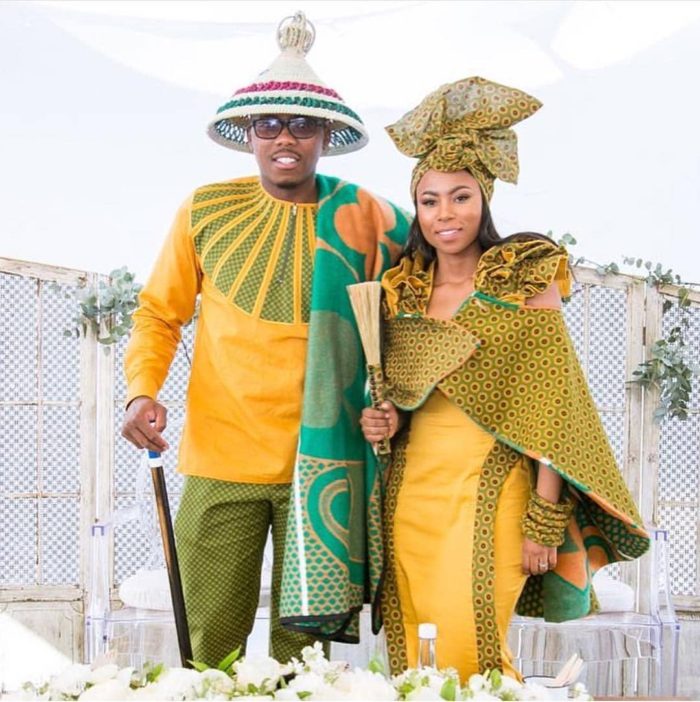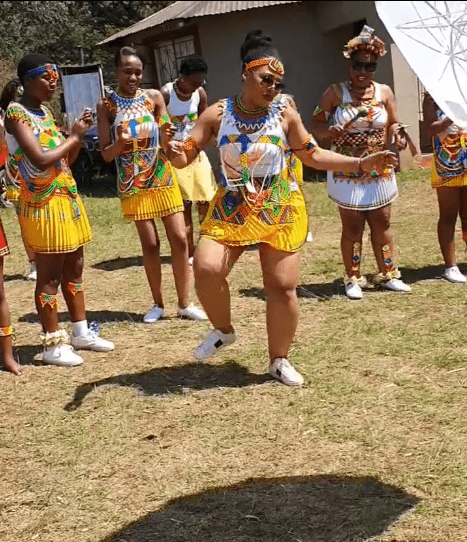Just like other African traditional weddings, Lesotho’s isn’t much different as the traditional wedding preparations usually starts with lobola negotiations when the prospective bride and groom’s families sit together to discuss the joining of the two families through marriage.
In those days and among very few today, arranged marriages used to be common among Basotho leaders and chief’s children. Ancestry and kinship connections were important.
It was the usual practice in those days, and in some quarters today, for the groom’s father to be the one to approach the bride’s parents.
If they were receptive, he would then ask for a calabash of water.
If the parents of the bride give their consent, the groom with a few of his friends would then formally visit her to know her personal stand concerning the match or agreement between both parents.
If she agrees, she would then give him a scarf ‘moqhaka’ and offer him food… The groom-to-be would then refuse the offer, accepting would imply that ‘he came for food not love’.
Although the couple may have never met, they usually approved the choice made. But today, things have changed as individual choice has become the norm.

Sotho Lobola Negotiations
Before money became the main medium of exchange, a person’s wealth was determined by the size of herd of cattle they owned. It is therefore not surprising that successful negotiations will lead to the groom making payment in “cows” in order to get his bride’s hand in marriage.
This kind of transfer was known as bohali, ‘bride wealth.’ Payments of cattle and other livestock signified that children would belong to the father’s clan and kin group, and not the mother’s.
The number of bohali was more or less fixed at 20 cattle, one horse, and 10 sheep or goats, but rarely paid in full. After a transfer of up to 10 cattle, subsequent payments signified increased bonding between the two families.
The couple was not supposed to have sexual intercourse or live together until the payment was completed.
The first bohali transfer, of six cattle or their cash equivalent, is an acknowledgement by the groom that he has had sexual relations with his wife, but does not mark his right to claim her children as members of his kin group; for this at least 10 cattle, or their cash equivalent, need to be transferred and acknowledged publicly.
After successful negotiations both families would exchange gifts like a bottle of wine or whisky, dishes or blankets.
The two families then agree on the date of the traditional wedding when the bride will be brought to the groom’s parents’ home.
After which the two families slaughter cows and exchange some of the blood to each other. The bride is then given a new first name by the groom’s family, indicating that she has been accepted into the family.
This new name might be a female family member’s name, for example a grandmother’s name.
Today many marriages occur after “shobela” (eloping); when the man and his friends take away his bride to his home. The bride is then received with an animal slaughtered to celebrate, as if a wedding had already taken place. Her belongings are then sent after her.
In the past, it was usually only close friends and relatives that were invited to the traditional wedding to celebrate with the new couple. But today, community members can also attend the traditional wedding even if they were not invited.
Today also, many modern Sesotho couples (as many other Africans) have a white wedding ceremony in addition to the traditional wedding ceremony.
These days, a new couple is still not expected to have its own family house. The bride lives with the groom’s parents. She cooks, helps with chores, and works in the fields, at all times obeying rules of respect ‘hlonipho’ for her father-in-law that include not saying his name or any word that sounds similar to it.
In the past a man could apply for land and a building site at the start of the first season after marriage, and slowly the new household’s independence in the extended family structure developed.
However, many brides resist this, and push to start their own homes immediately they get married.
PHOTO-Credit: Thabo Makhetha










